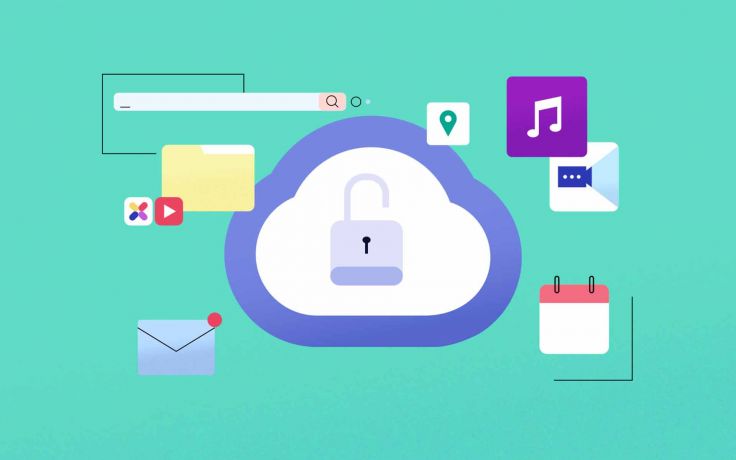The Biggest Cloud Migration Challenges and How to Tackle Them
- Published
- 4 min reading

The benefits of moving telecom business to the cloud are countless. It is estimated that, by migrating 75-80% of IT workloads to the cloud, operators can save 50% or even more on IT costs. Increased agility, decreased costs, opening new revenue streams, better support, high scalability, boosted efficiency and decreased time to market are just a few advantages. These benefits address growing customer demand for cloud-based solutions.
Although the need for services based in the cloud is growing, some telecoms are still facing challenges on their transformational journey. What are these, and how can operators tackle them?
Fear of a costly and lengthy process
Moving to the cloud can help operators cut costs significantly by boosting productivity, streamlining processes and reducing administrative costs. This is a well-known and tested fact. Nevertheless, in order to get there, telecoms need to go through the process of moving. And this can be costly and time-consuming.
It’s all worth it, but it can be complex. That’s why the best we can do is prepare and plan the big move ahead.
Where to start? The best approach begins with finding a trusted partner – a cloud vendor that can help you evaluate the costs, and plan a schedule that’s effective and feasible. Together, you’ll decide how to best manage the team and the costs that will be involved.
No well-defined cloud migration strategy
When it comes to the cloud, be strategic and think ahead. The most effective migrations to the cloud are carefully considered. If you’re not sure where to start with your cloud migration, talk to your vendor. Work together on a plan that best suits your business needs.
Take your time. Think about your needs, and choose the approach that fits them.
What are the most common cloud migration strategies?
- Lift and shift (rehosting)
This strategy is most commonly used for low-impact workloads. Lift and shift cloud migration is also quick and less disruptive than other approaches, but it can mean you miss many of the cloud-native benefits. - Move and improve (replatforming)
A strategy that seems to be the “middle ground” from rehosting to refactoring, as it offers similar benefits to lift and shift, but also encompasses some upgrades when it comes to different applications and processes. - Rip and replace (refactoring)
The rip and replace strategy (also called re-architecting, or refactoring) is the most invasive, but also potentially the most beneficial. The approach allows you to become truly cloud-native. It does involve more costs and time than the other approaches, yet it can be the most profitable in the long-run. Adopting cloud-native architecture also opens the possibility of using many features and services available in public clouds, thus reducing the costs associated with launching your own solutions. In addition, this approach gives you a chance to get rid of many of the problems of the previous system thanks to refactoring. - Repurchasing
This approach refers to applications that cannot be moved to the cloud, and simply involves buying new ones that are already there and have the same features. - Retiring
The retiring strategy can be useful pretty much everywhere – if there are applications you don’t need, you can simply “retire” them to the cloud. - Cloud to cloud
As the name suggests, this approach is all about migrating from one cloud to another, which is more suitable to changing business needs. - Reverse cloud migration
Repatriation, unclouding, or de-clouding – reverse cloud migration is sometimes used as a way of migrating apps from the cloud to an on-site data center.
These are just some of the most common approaches. You can work with your cloud vendor on an individual strategy that matches your cloud migration plans.
Data security and compliance threats
There is a belief that saving and processing data in the cloud is less secure. This is simply not true as public clouds of major players such as Amazon and Azure guarantee a much higher level of security than many on-premises installations.
Additionally, there are many solutions based on AI/ML that allow you to detect and counteract suspicious behavior, such as logging into the system from a "unusual" place or device.
Statistically, the opportunities behind the cloud far outweigh the potential threats. Nonetheless, many businesses, including telecoms, are still sometimes hesitating to migrate their data to external cloud services, even though the environment proves to be secure.
Public cloud providers introduce policies, technologies, and other advanced processes of preventing potential threats. A trusted cloud vendor provides a safe cloud migration plan that ensures your company data transfers take place through your preferred routing path, ensuring the security of your data behind a firewall.
Avoiding vendor lock-in
While migrating to the cloud, one of biggest challenges is to transfer the system to a public cloud, which will offer as many benefits as possible while avoiding vendor lock-in.
This can be though tackled quite easily – by choosing the right provider.
Find a trusted partner and work on your cloud migration plan together
As challenging as the cloud migration process may be for the telecoms, it is also very rewarding – especially in the long-run. The ways that migration can help in streamlining operations, enabling network automation, making better use of data, and bringing resilience, agility and scalability, are invaluable.
The most important thing to do, in order to face the challenges is prepare for the move.
Find a business partner you can trust, create a carefully considered strategy and work together on the migration step by step.
If you’re interesting in moving your telecom business to the cloud soon, contact our team, or learn more about our recent deployment for a Tier 1 operator here.




